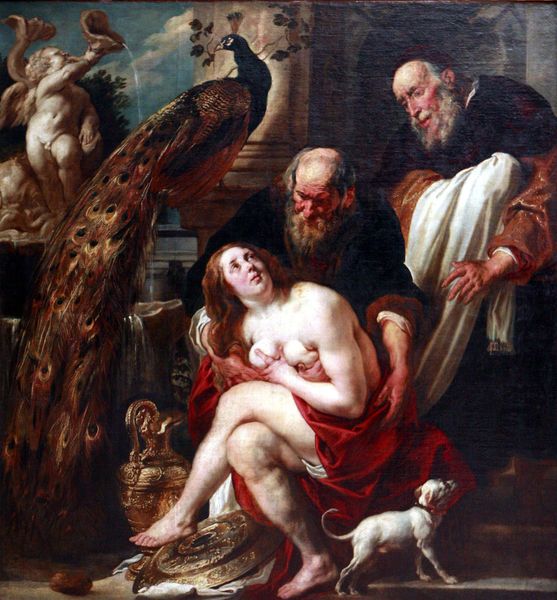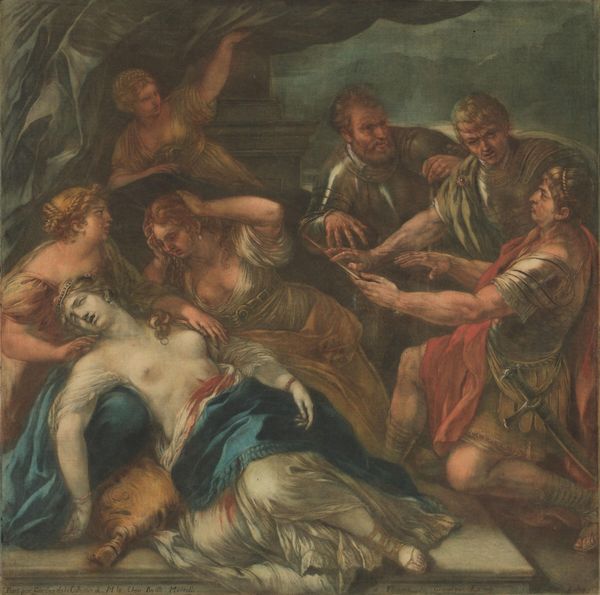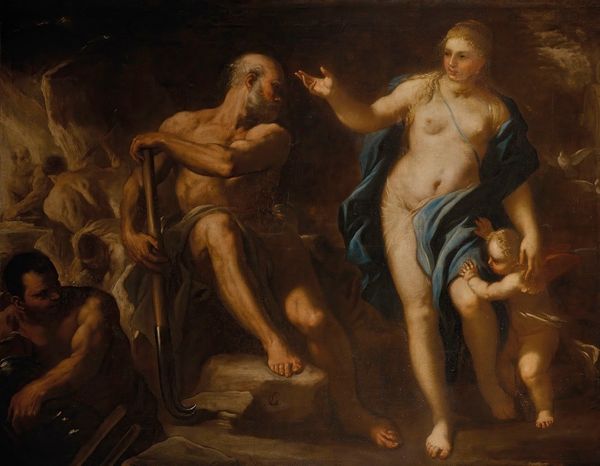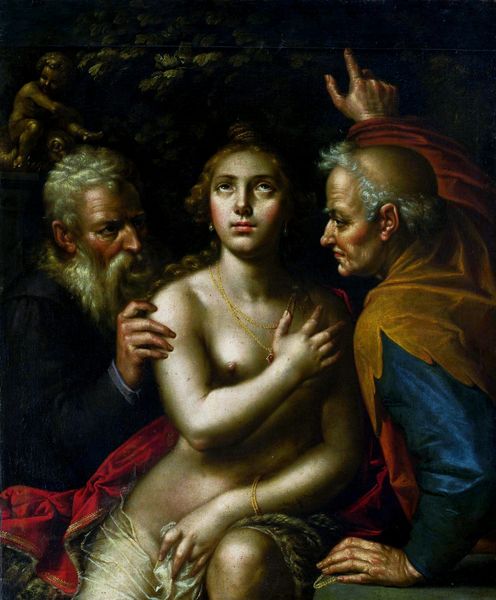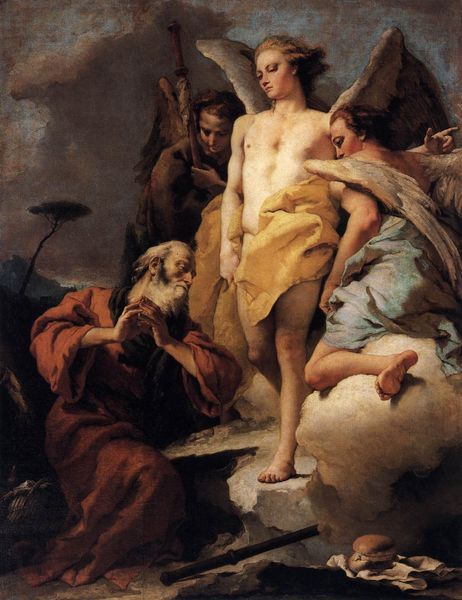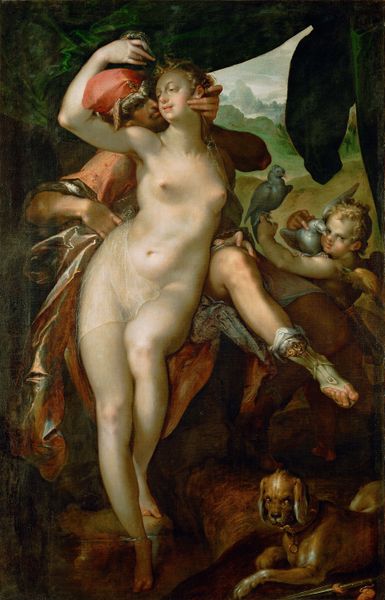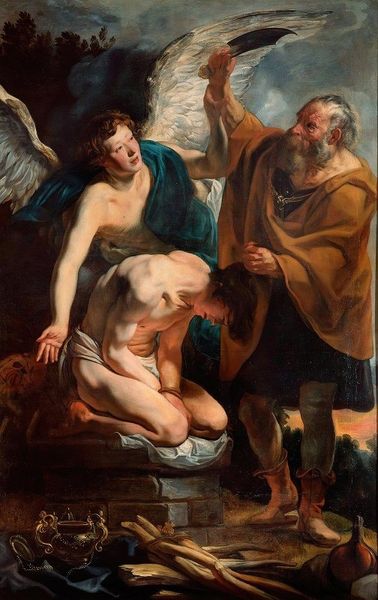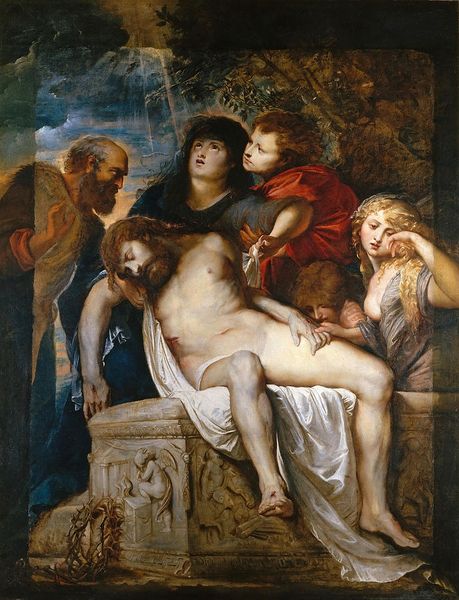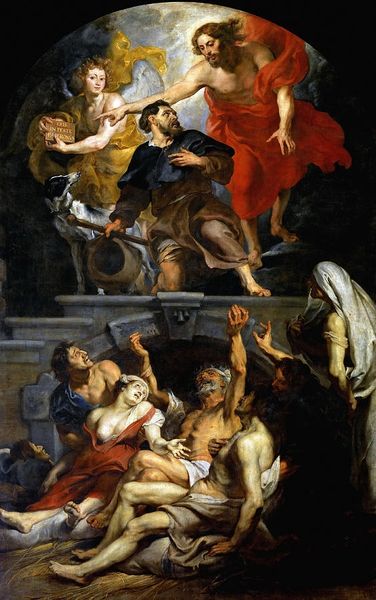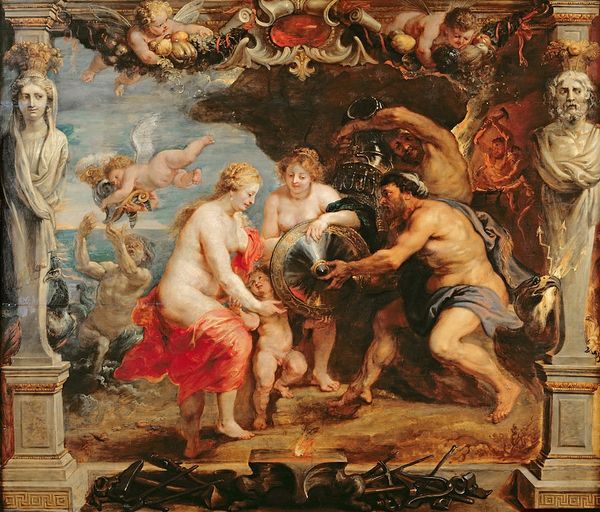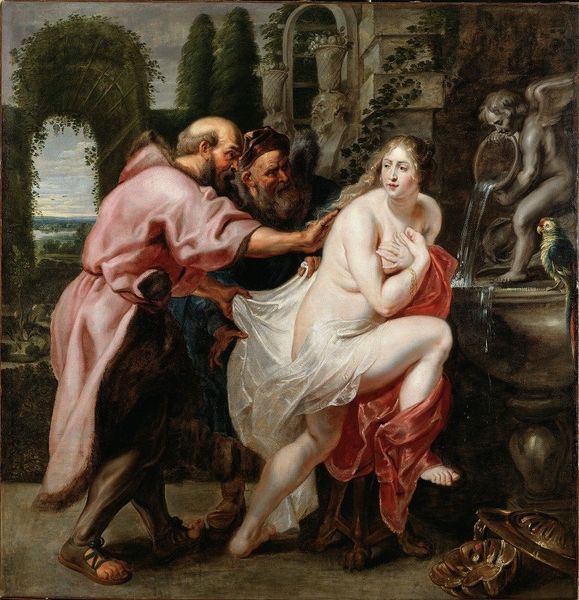
painting, oil-paint
#
portrait
#
allegory
#
narrative-art
#
baroque
#
painting
#
oil-paint
#
figuration
#
oil painting
#
underpainting
#
mythology
#
history-painting
#
nude
#
portrait art
Dimensions: 198 x 218 cm
Copyright: Public domain
Editor: Here we have Peter Paul Rubens' "Susanna and the Elders," painted in 1610 with oil on canvas. There's so much dramatic tension, and Susanna's vulnerability is palpable. What's your take on this piece? Curator: It's important to consider the role paintings like this played in their original context. Rubens wasn't just depicting a biblical scene; he was participating in a visual dialogue about morality, power, and the male gaze within a heavily patriarchal society. The depiction of Susanna and the voyeuristic elders, which has been critiqued across centuries, needs to be carefully approached because it was often commissioned or publicly displayed for consumption in spaces largely owned by elite men. How do you think the display setting might impact interpretations? Editor: That's a powerful point. Placing it in those settings definitely adds layers of complexity. Was Rubens perhaps trying to challenge those social norms, or was he simply catering to the demands of his patrons and reinforcing those viewpoints? Curator: That's the complexity we must consider: to what extent did Rubens intentionally critique those power structures versus reflecting and, potentially, normalizing the pervasive attitudes toward women in that era? Even though artistic circles engaged diverse audiences, how can museums like the Real Academia de Bellas Artes, where it resides today, critically contextualize the ethical quandaries presented by the artwork? Editor: It’s unsettling to think about how this painting may have been perceived back then. It definitely makes me see it in a completely different light. Curator: It's crucial to question what these images meant then, and what they signify now. Museums play a critical role in shaping this understanding. Editor: I appreciate your emphasis on institutional responsibility and the sociopolitical contexts behind artistic creation! Curator: My pleasure, seeing the historical backdrop lets us understand more critically art pieces exhibited now.
Comments
No comments
Be the first to comment and join the conversation on the ultimate creative platform.

